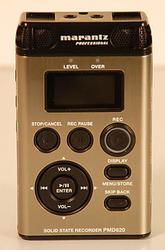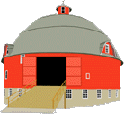Audio
Whether you choose to record in analogue or digital it is important for the resulting product to have the best sound quality possible. Therefore, the most important consideration is the microphone. There are many different styles and types of microphones, so be sure you are purchasing the one that will work best for your interview situation.
Analogue
 Marantz Audio RecorderAnalogue audio is a common format that often uses magnetic tape. Some examples of analogue audio are cassette tapes and reel-to-reel tapes. It is important to note that there is a lifespan to this form of media. Also, the initial cost for analogue formats is reasonable, but they require the process of digitization for use in any computer or digital multimedia project, which may increase the expense.
Marantz Audio RecorderAnalogue audio is a common format that often uses magnetic tape. Some examples of analogue audio are cassette tapes and reel-to-reel tapes. It is important to note that there is a lifespan to this form of media. Also, the initial cost for analogue formats is reasonable, but they require the process of digitization for use in any computer or digital multimedia project, which may increase the expense.
Digital
Digital Audio is becoming a cost conscious way of recording because it offers a variety of benefits which save money over the long term. Digital audio files can be large, so you should be aware of the cost of digital storage and the best practices for archiving digital media. This investment will save both time and money if you are working on a computer. Files can easily be moved into editing software or digital transcription software, skipping the step of digitization.
Software
There are many types of audio editing software available on the internet and in the consumer market. The A-V Barn project used a piece of open source software called Audacity. Some non-open source software options include Sony Soundforge or Adobe Soundbooth. All of these options will allow the user to cut and splice wave forms, as well as enhance quality and re-render it in different formats.
